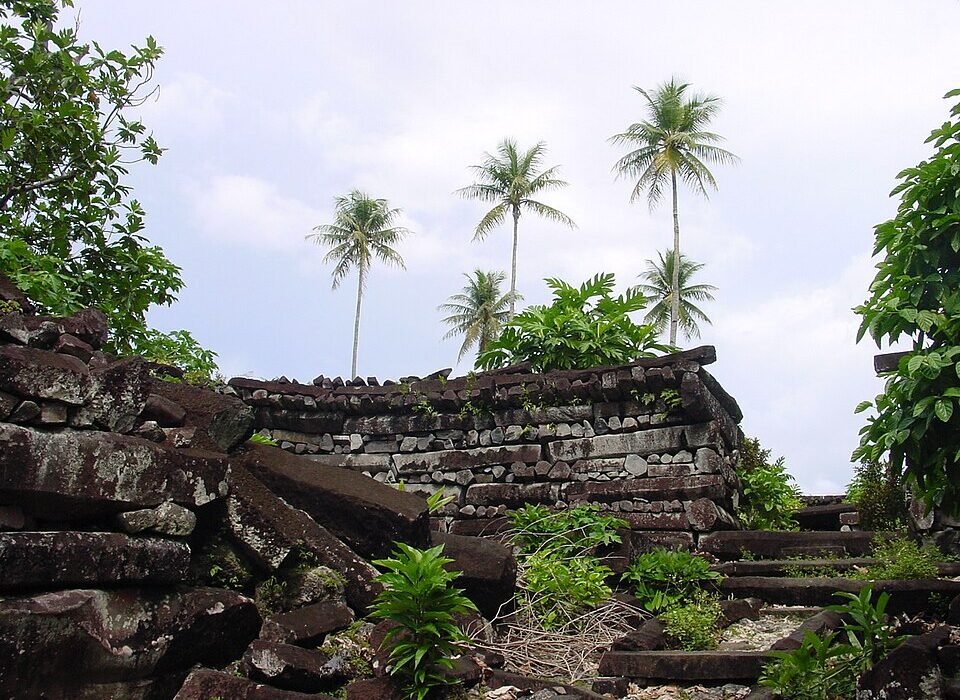Across windswept plains, cloaked in moss and mystery, rise towering stone structures that defy both time and logic. From the windswept moors of England to the sunbaked plateaus of Peru, colossal stones—some weighing hundreds of tons—stand silently, arranged in patterns that have perplexed and inspired generations. They are the megalithic monuments: ancient temples, tombs, alignments, and sanctuaries hewn from stone long before the written word emerged. Their creators? Often unknown. Their techniques? Lost. Their motivations? Shrouded in the fog of prehistory.
These stones are not merely relics; they are messages from a past that modern civilization can barely decipher. They speak of lost knowledge, immense collaboration, and a relationship with nature and the cosmos that modern people may never fully comprehend. Who were these forgotten builders? What did they know that we have forgotten? And why, after millennia of exposure to the elements, do their monuments still stand?
This is the story of those who left no name—but left a legacy carved in stone.
The Silent Architects of Prehistory
The term “megalith” originates from the Greek words mega (large) and lithos (stone). It broadly refers to any large, man-made stone structure built without the use of mortar or concrete. While Stonehenge in England may be the most famous, megalithic structures are found on every continent except Antarctica. They appear in forms as varied as dolmens (stone tombs), menhirs (standing stones), passage graves, and vast stone circles.
What’s extraordinary is that many of these structures date back more than 5,000 years—long before the construction of the Egyptian pyramids, and even before the invention of the wheel in many regions. In some cases, the monuments predate the emergence of complex urban societies. And yet they exhibit mathematical precision, astronomical alignment, and logistical feats that challenge modern understanding.
Archaeologists have studied the stones themselves in exquisite detail. They know their mineral composition, their origins, and their layout. But about the builders? Less is known. Very few written records survive—if any existed at all. What we are left with is architecture without authorship.
Stonehenge and the Mystery of the Missing Engineers
Take Stonehenge. Its elegant ring of standing stones, set within a henge or circular ditch, has become an icon of ancient mystery. Built over a thousand years in several phases, it dates back to roughly 3100 BCE. The largest stones, known as sarsens, weigh up to 25 tons. Some were transported from over 150 miles away. Others—smaller but equally significant “bluestones”—are believed to have come from the Preseli Hills in Wales.
How were these stones moved? Theories abound, from rolling them on logs to floating them on rafts. But no single explanation satisfies all the logistical questions. Then there’s the question of purpose. Stonehenge is aligned precisely with the solstices—sunrise on the summer solstice, sunset on the winter. Was it an astronomical observatory? A temple of the sun? A healing center? Or something more symbolic, reflecting beliefs that died with their builders?
The builders themselves left no inscriptions. We do not know their names, their tribal affiliations, or the culture that shaped them. What we do know is this: constructing Stonehenge required not only vision and planning but also organization, engineering knowledge, and a powerful social structure.
Göbekli Tepe: The First Temple?
In southeastern Turkey, a windswept hill hides what might be the world’s oldest known temple—Göbekli Tepe. Discovered in the 1990s, this megalithic complex is dated to as early as 9600 BCE, shattering previous timelines for the development of civilization.
The site consists of massive T-shaped pillars, some standing over 16 feet tall and weighing up to 20 tons. They are arranged in circular enclosures and adorned with bas-reliefs of animals—foxes, snakes, wild boars—and abstract symbols whose meaning remains undeciphered. There are no signs of permanent habitation—no homes, no agriculture—leading scholars to believe that hunter-gatherer societies were capable of organizing labor for monumental religious construction.
The implications are staggering. If Göbekli Tepe predates agriculture, it suggests that spiritual or social cohesion—not farming—may have driven early humans to form complex societies. The builders of Göbekli Tepe lived at a time when metallurgy, pottery, and writing had not yet emerged. And yet, they created one of the most ambitious megalithic projects ever attempted.
As to who they were, their names and cultures are lost to history. But they were undoubtedly humans with profound beliefs, technical ingenuity, and the ability to coordinate massive projects—long before cities or empires were born.
Sacsayhuamán: The Stone Puzzle of the Andes
High in the Peruvian Andes, above the historic city of Cusco, lies a fortress-like complex that continues to confound archaeologists: Sacsayhuamán. Constructed with gargantuan stones, some over 100 tons in weight, the walls of Sacsayhuamán are renowned for their astonishing precision. The stones fit together so tightly that not even a razor blade can slide between them.
No mortar was used. The stones were carved to interlock with each other perfectly, in patterns that resemble massive jigsaw puzzles. Some feature up to a dozen corners, sculpted to fit precisely with their neighbors. The effort to shape, move, and fit these stones is mind-boggling—especially considering that the builders lacked iron tools, wheels, or modern lifting technology.
Who built Sacsayhuamán? The Inca are traditionally credited, but some believe the foundation may predate the Inca by centuries, perhaps even millennia. Legends speak of a race of giants or earlier peoples with lost knowledge. Mainstream archaeologists remain cautious, attributing the site to the height of Inca engineering prowess.
Yet even with modern tools, recreating the methods used at Sacsayhuamán would be incredibly difficult. The builders—whoever they were—combined brute strength, geometric mastery, and artistic vision in ways that modern engineers still struggle to explain.
The Builders of Carnac and the Forgotten Alignment
In the northwest of France, near the coast of Brittany, lies one of the most extensive and enigmatic megalithic sites in the world: Carnac. Here, over 3,000 standing stones stretch across the landscape in long, mysterious rows—aligned with an accuracy that seems more astronomical than agricultural.
Dating to around 3300 BCE, the Carnac alignments are older than the pyramids and may have involved centuries of planning and effort. Each stone—called a menhir—stands in solitude but is part of a greater whole. Some believe the alignments track celestial cycles or mark geomagnetic lines of power. Others suggest they served ritualistic or funerary purposes.
What’s missing, once again, is a name. The builders of Carnac are ghosts—prehistoric peoples whose languages and myths have vanished. Yet they left behind a landscape redefined by stone, reflecting a knowledge of geometry, astronomy, and land use that we are only beginning to understand.
Forgotten Hands Across the Globe
The narrative of forgotten builders isn’t confined to Europe and South America. On the island of Malta, massive temples like Ħaġar Qim and Mnajdra date back over 5,000 years. In Indonesia, the stepped pyramid of Gunung Padang suggests ancient construction over tens of thousands of years. In India, the temple caves of Ellora hint at lost carving techniques. Even in North America, mound-building cultures like the Mississippians created massive earthen structures aligned with solar cycles.
What unites these sites is not just their scale, but the anonymity of their creators. These were not individuals seeking fame, but collectives moved by vision. The absence of written records leaves modern researchers dependent on architecture, artifacts, and legends to reconstruct their stories.
In some traditions, these builders are remembered as demigods or giants. In others, they are said to have disappeared in floods or fled from invading forces. Myths may distort truth, but they often preserve memory. And in the absence of written testimony, myth may be the only voice these builders still possess.
The Knowledge That Time Could Not Erase
Despite the silence of their creators, the stones themselves speak volumes. The astronomical alignments in megalithic structures suggest that ancient peoples were far more aware of celestial cycles than we once believed. Solstices, equinoxes, lunar cycles, and even eclipses appear encoded into their layouts.
Mathematics also plays a role. The geometry found in many megalithic layouts implies an understanding of circles, triangles, and ratios that anticipates later developments in Greece and Rome. In some cases, megalithic sites share common measurements, such as the so-called “megalithic yard,” suggesting the possibility of a shared cultural tradition or an ancient system of units.
This suggests that the forgotten builders weren’t just laborers—they were engineers, astronomers, and spiritual leaders. They organized entire communities, trained apprentices, and passed on knowledge orally. While we may never recover their names, we can begin to recognize their intelligence and vision.
A Legacy Etched in Stone
The megalithic monuments of the world stand as monuments not just to stone, but to memory. They remind us that history is not solely the story of emperors, wars, and written treaties. It is also the story of ordinary people—farmers, masons, artists, priests—who dreamed in stone and reached for the stars.
Their work challenges our assumptions about the past. It asks us to reconsider the pace and nature of human progress. It hints at civilizations that rose and fell without leaving written chronicles but whose genius is recorded in the very bones of the Earth.
And in a world where technology has digitized everything, the solidity of megaliths remains strangely comforting. They are timeless in a way that few modern creations can ever be.
Echoes of a Lost World
Who were the forgotten builders? We may never know for sure. They were not kings or conquerors, not scribes or merchants. They were visionaries who spoke in the language of stone. They lived and died long before modern nations existed, before religions were codified, before history had a name.
But they are not truly lost. Their spirits walk with us through silent fields, in circles of stone, through moss-covered ruins, and beneath the great lintels of forgotten temples. They are remembered—not by name, but by deed.
And as long as their monuments stand, they will never be forgotten.






